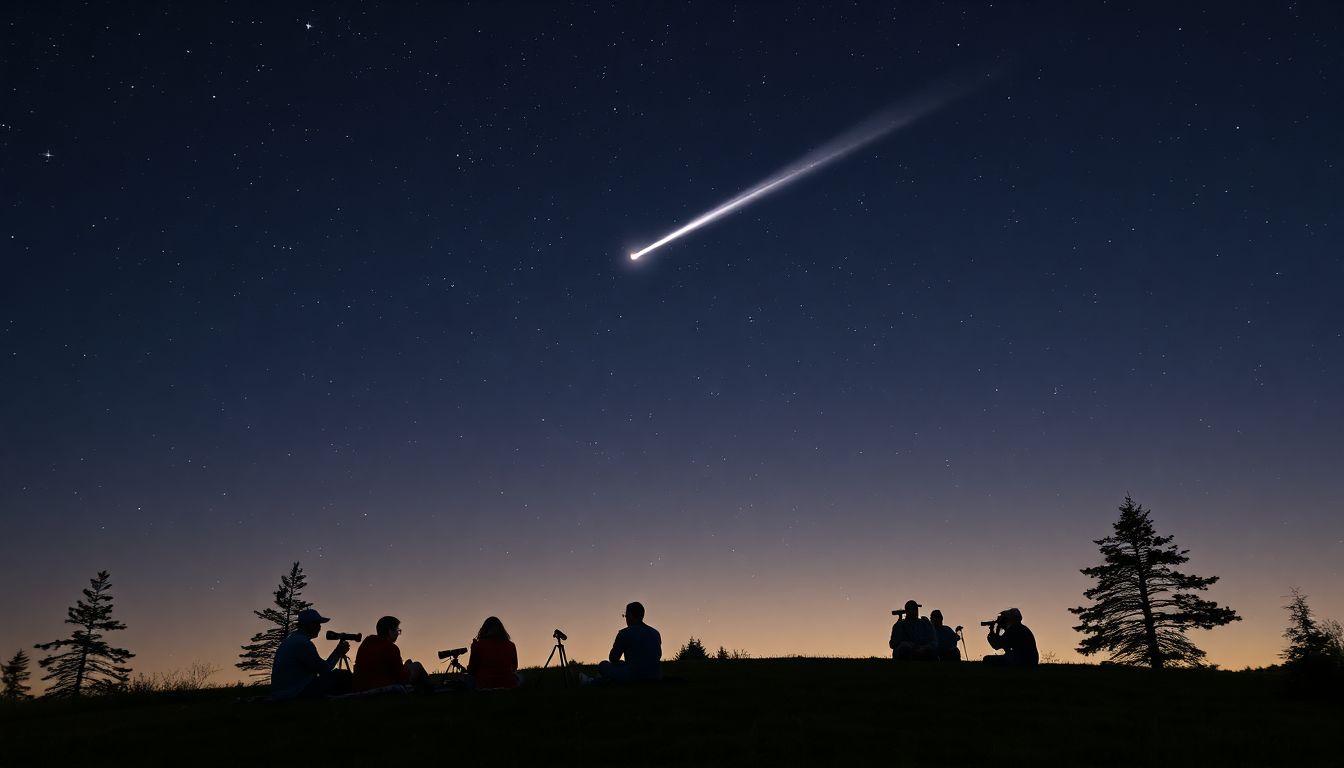
Simple Tips for Watching the Comet on Clear Nights: A Guide to Enhancing Your Viewing Experience
Introduction
Watching a comet light up the night sky feels like catching a rare streak of magic. These icy visitors from space are beautiful and unpredictable, making them a highlight for astronomy lovers and casual stargazers alike. Recently, comets like NEOWISE and NEOWISE-C dazzled millions, sparking more interest in comet hunting. If you want to catch a glimpse of this cosmic wonder, proper planning and a little preparation can turn a good night into an unforgettable experience.
Preparing for Your Comet-Watching Session
Choosing the Right Time to Observe
Timing can make or break your chances of seeing a comet. Keep an eye on astronomy websites or apps that forecast comet visibility. These tools show when the comet is closest and brightest.
Moon phases matter too. Clear nights during a new moon or a thin crescent are best because bright moonlight washes out faint objects. Tools like timeanddate.com or Stellarium help you plan your observation for when the sky is dark and the comet is high overhead.
Selecting the Best Location
Location is everything. If you want clear views, head to places far away from the glow of city lights. Light pollution dims star and comet visibility, so rural areas or dark sky parks are ideal.
Check local maps or apps that show light pollution levels to find the darkest spots nearby. The less artificial light, the better your chance to see a comet in all its glory.
Planning Your Equipment and Gear
You don’t need fancy gear to enjoy a comet, but some tools help. Binoculars are affordable and give a wider view than the naked eye. If you have a telescope, it will reveal more details like the tail or surface structure.
Pack comfortable gear like blankets, chairs, and warm clothing. Long nights outdoors can get chilly. Using star charts or stargazing apps can help you locate the comet easily and stay focused during your session.
Understanding Comet Visibility and Tracking
Recognizing Comet Brightness and Size
Comet brightness is measured using a scale called magnitude. Lower numbers mean brighter objects. A bright comet can have a magnitude of 2 or 3, which is visible even without tools. Fainter comets need binoculars or a telescope.
The size and activity of a comet affect how bright it looks. Comets with a large, glowing coma and a long tail tend to be more eye-catching. Recent good examples include Comet NEOWISE-C, which lit up the sky last summer.
Using Astronomy Apps and Resources
Apps like SkySafari, Stellarium, or Star Walk turn your smartphone into a guide. They show real-time locations of celestial objects and help you track the comet’s progress.
Online forums and social media groups are full of experienced stargazers sharing tips and updates. Set alerts for upcoming sightings so you won’t miss the moment when the comet reaches its peak.
Reading and Interpreting Comet Predictions
Astronomers use math and computer models to predict a comet’s path and brightness. Understanding these details helps you plan better.
Always check trusted sources like professional observatories or space agencies. Avoid relying on outdated info, which can overestimate or underestimate visibility.
Techniques for Optimal Viewing
Timing Your Observation
The best window to see a comet is usually in the early evening or late at night when it’s high in the sky. Shifting your bedtime to match these times boosts your chances of catching the best view.
Set alarms or reminders. Don’t wait until late at night and then scramble to find the comet — plan ahead for a smoother experience.
Enhancing Visibility with Equipment
Binoculars are simple tools that make faint comets easier to spot. Use them to see more of the brightness and tail.
Telescope owners can explore even more details, like the shape of the coma or tail features. Keep your focus steady and use a tripod if possible — stability improves clarity.
Recording and Appreciating the Experience
Bring a camera or sketchpad to capture your sighting. Low-light camera settings and patience help a lot. Pictures may not do justice to the real thing, but they make wonderful memories.
While observing, take your time and soak in the view. Notice how the comet moves slowly across the sky. Stay patient — great views often come after a little wait.
Safety Tips and Best Practices
Nighttime Safety Precautions
Choose familiar, safe locations and tell someone where you’re going. Carry a flashlight with red light mode so your eyes stay adjusted.
Stay alert to your surroundings — uneven ground, wildlife, and other hazards can catch you off guard.
Environmental and Ethical Considerations
Follow Leave No Trace principles. Clean up after yourself, leave the area better than you found it, and respect wildlife and other stargazers. This keeps viewing spots open and safe for everyone.
Conclusion
Seeing a comet on a clear night can be a breathtaking experience. The key is to prepare well, pick the right spot, and be patient. Use the right tools and keep an eye on updates to catch the comet at its brightest. Planning ahead turns a simple night sky into a memorable adventure. Grab your gear, find a dark spot, and enjoy the wonder of the universe — you might just witness a once-in-a-lifetime moment.

